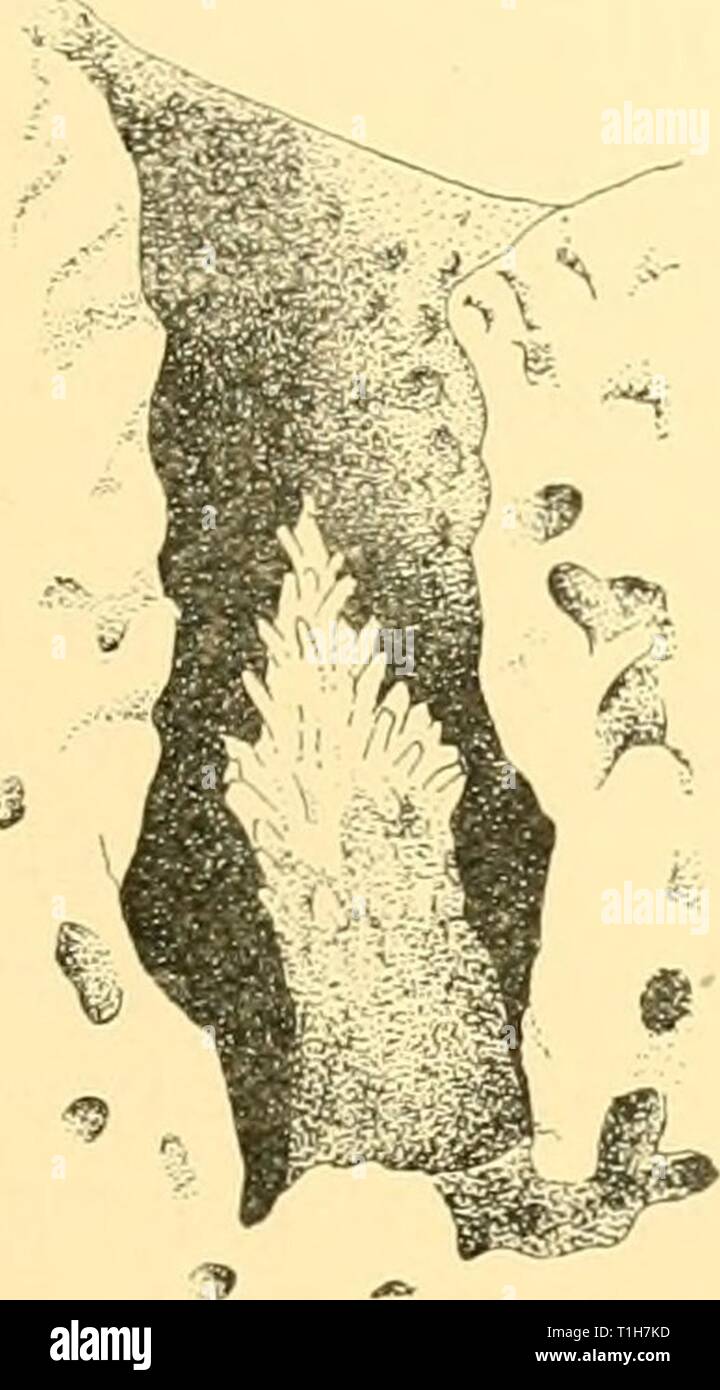Discovery reports (1954) Discovery reports discoveryreports26inst Year: 1954 39 STYLASTERIDAE (HYDROCORALS) FROM SOUTHERN SEAS are present also in older parts of the colonies, although they are more prominent on the thinner, apical or peripheral, branchlets than on more central branches of the meshwork (PI. II, fig. 2; PI. Ill, fig. 1). These features seem to indicate that the spines are gradually absorbed by the growth of the surrounding coenosteum, and that they do not grow materially after the incorporation of the branchlet in the mesh- work of the colony. At first glance we might presume

Image details
Contributor:
Bookend / Alamy Stock PhotoImage ID:
T1H7KDFile size:
5.7 MB (189.9 KB Compressed download)Releases:
Model - no | Property - noDo I need a release?Dimensions:
1053 x 1900 px | 17.8 x 32.2 cm | 7 x 12.7 inches | 150dpiMore information:
This image is a public domain image, which means either that copyright has expired in the image or the copyright holder has waived their copyright. Alamy charges you a fee for access to the high resolution copy of the image.
This image could have imperfections as it’s either historical or reportage.
Discovery reports (1954) Discovery reports discoveryreports26inst Year: 1954 39 STYLASTERIDAE (HYDROCORALS) FROM SOUTHERN SEAS are present also in older parts of the colonies, although they are more prominent on the thinner, apical or peripheral, branchlets than on more central branches of the meshwork (PI. II, fig. 2; PI. Ill, fig. 1). These features seem to indicate that the spines are gradually absorbed by the growth of the surrounding coenosteum, and that they do not grow materially after the incorporation of the branchlet in the mesh- work of the colony. At first glance we might presume dimorphism to exist among the dactylopores, small dactylopores being found as circular holes in the coenosteum in great numbers between the spines (Figs. 3, 4). On the other hand, it is obvious that the spines do not quite correspond either to the nariform or the water- spout-like spines of Errina. In their disposition, especially on the branchlets, they are reminiscent of the nariform spines of Eu-Errina, but it is also evident that they are connected with, or probably â , ;'i. 'â ''-v--â.--x £M -'. f> -'*â â